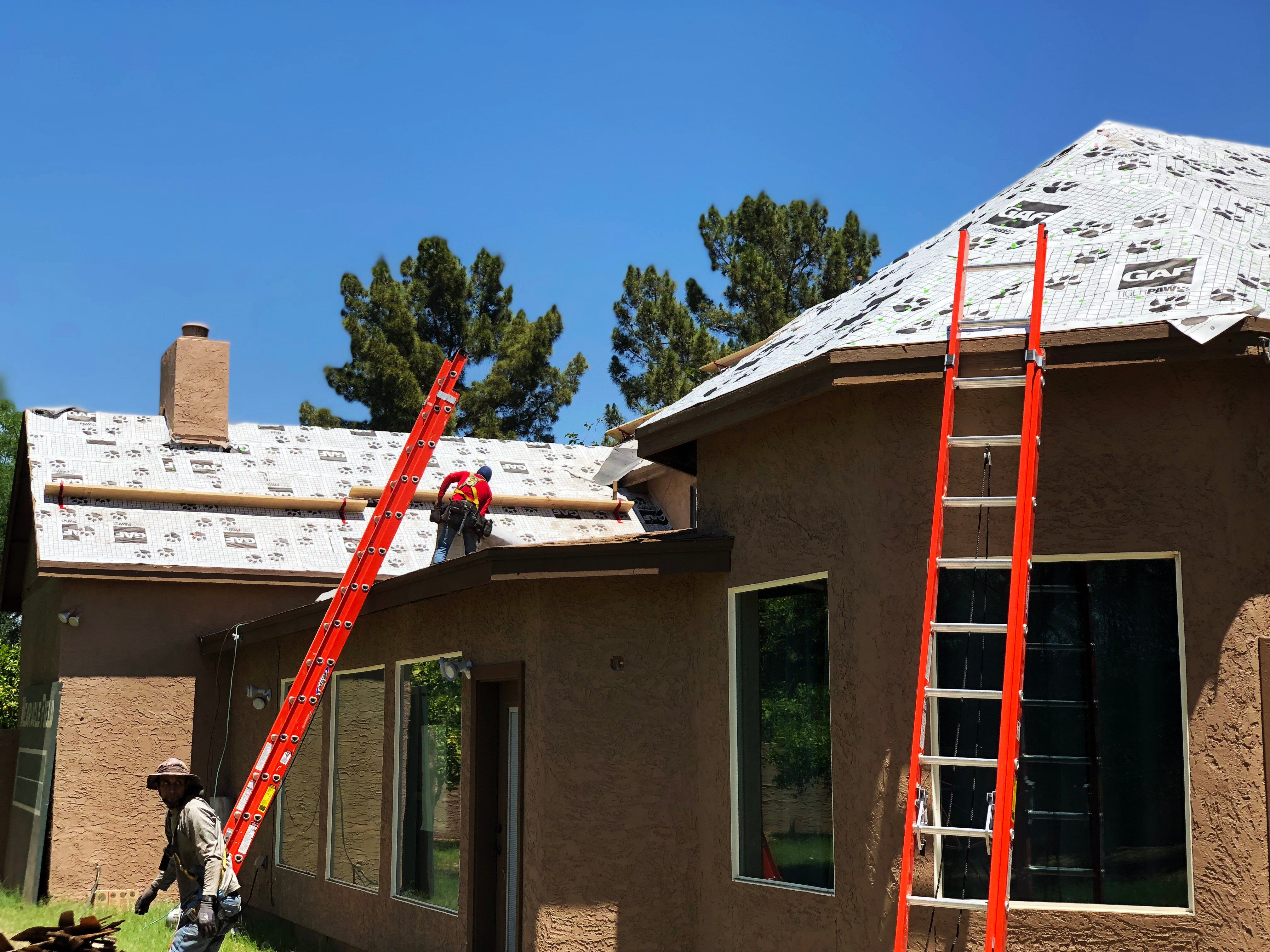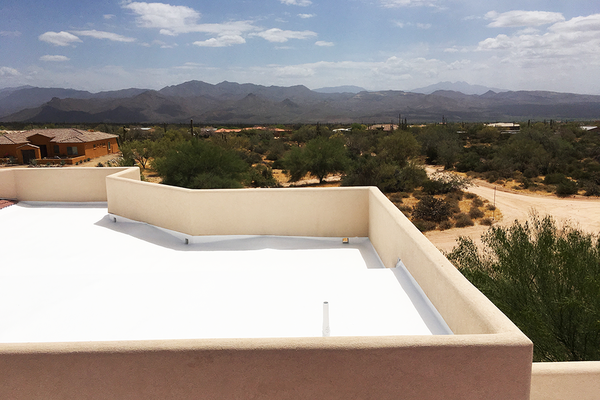Roof Underlayment 101: What It Is & Why It’s Important
Home / Azul Blog / Roof Underlayment 101: What It Is & Why It’s Important When most homeowners think about their roof, they picture the tiles, shingles, or foam that cover the top...
One question we get a lot is, “Which roofing material is the best quality and lasts the longest in Arizona?” The answer to this really depends on what factors each homeowner values most - whether it be aesthetics, longevity, overall installation costs, or ease of maintenance. In short, every roofing system has its advantages, disadvantages, and eco-friendly contributions.
The lifespan of your roof will depend on a combination of factors, such as the overall design, quality of materials, environmental conditions, and quality of the installation. Today’s top roofing products can easily last for decades when installed by a qualified roofing professional and properly maintained.
Even still, our severe Arizona heat, monsoon rains, and excessive UV exposure can damage even the best roofing systems. Taking proper care of your roof is critical. Scheduling regular maintenance inspections and have any repairs made promptly to ensure a maximum lifespan and unexpected damage to your home or possessions.

There are basically two types of shingles: regular 3-tab shingles and architectural shingles. On average, 3-tab shingles are just a few dollars cheaper than the architectural shingles, but they are harder to come by and are usually only used for repairs of existing 3-tab roofs. They are also slightly thinner, which reduces their lifespan to the lower end of the expectancy range, depending on upkeep.
Wood roofs have declined in popularity in Arizona over time and the quality of materials has seen a general decrease as well. Still, many homeowners like the aesthetic of a wood shingle roof and prefer it to other roofing options.
Metal roofs have become quite popular, especially for modern homes and commercial businesses. They offer a very appealing aesthetic that is both clean and modern, as well as a long life.

Tile roofs are the second most popular roofing systems in Arizona. They can be made of clay, concrete, and sandcast. Concrete tiles are generally more affordable than clay, but tend to not last quite as long due to the underlayment being of lesser quality than what typically comes with clay or sandcast tiles.

Polyurethane foam roofs are the most popular roofing systems for flat roofs in Arizona and are widely used for commercial roofing systems.
Advantages of foam roofs: Polyurethane foam has the ability to withstand the expansion and contraction of a building’s structure. It's lightweight, durable, and seamless. Foam roofs insulate your Arizona home, leading to a 7 – 15% decrease in cooling costs.
No matter what kind of roof you choose, it will only last as long as it's properly maintained and taken care of. At Azul Roofing Solutions, we offer free, no-obligation roof inspections to ensure your roof is always in tip-top shape. If you've been considering having your roof looked at, now's the time to act! Contact us through the button below to request your free site evaluation.
Asphalt shingles typically last between 25 to 50 years, depending on whether they’re standard 3-tab or architectural shingles and how well they’re maintained.
Wood shakes and shingles generally last 30 to 50 years in Arizona, though they require proper maintenance, treatment for fire and pests, and periodic inspections.
Metal or steel roofing materials can last 50+ years, often outliving many other roof types with minimal maintenance.
Yes. Tile roofs—made from clay, concrete, or sand-cast—offer lifespans of 50+ years, and in some cases up to 80+ years, assuming proper underlayment maintenance and replacement.
Foam roofing, properly maintained and coated, can also last 50+ years. It’s durable, lightweight, and adds insulation, though coatings may need more frequent attention depending on quality.
Lifespan depends on material quality, environmental conditions (UV, heat, monsoon rains), installation quality, maintenance (inspections, prompt repairs), and design factors like ventilation.
Longer-lasting materials tend to cost more upfront, may be heavier (especially tile), and can require more careful handling during repairs. Some types, like metal, can also be more vulnerable to hail or wind damage.

Home / Azul Blog / Roof Underlayment 101: What It Is & Why It’s Important When most homeowners think about their roof, they picture the tiles, shingles, or foam that cover the top...
